Sugar comes in many different varieties and manufacturing methods, and perhaps one of the most unique (and sometimes confusing) is powdered sugar. Powdered sugar is a type of sugar, either white or brown, that is ground into a fine dust and meticulously sifted to form a dusty and light texture style of powder. With this in mind, powdered sugar is typically used as a garnish or as a finishing on top of a variety of desserts.
Powdered sugar dates back to the eighteenth century and is one of the most commonly used finishers for both decoration and as a final ingredient in a variety of desserts. Powdered sugar is also known as confectioners sugar and is presented as a very fine powder that is the most granulated form of sugar.
In this guide we are going to explore everything there is to know about powdered sugar. Confectioners sugar is almost always thought of as a decorative tool, but it may surprise you to learn that there are actually a variety of recipes in baking that call for the use of powdered sugar exclusively. We will also take a look at how powdered sugar is made and give details on how you can make your own.
What Is Powdered Sugar?
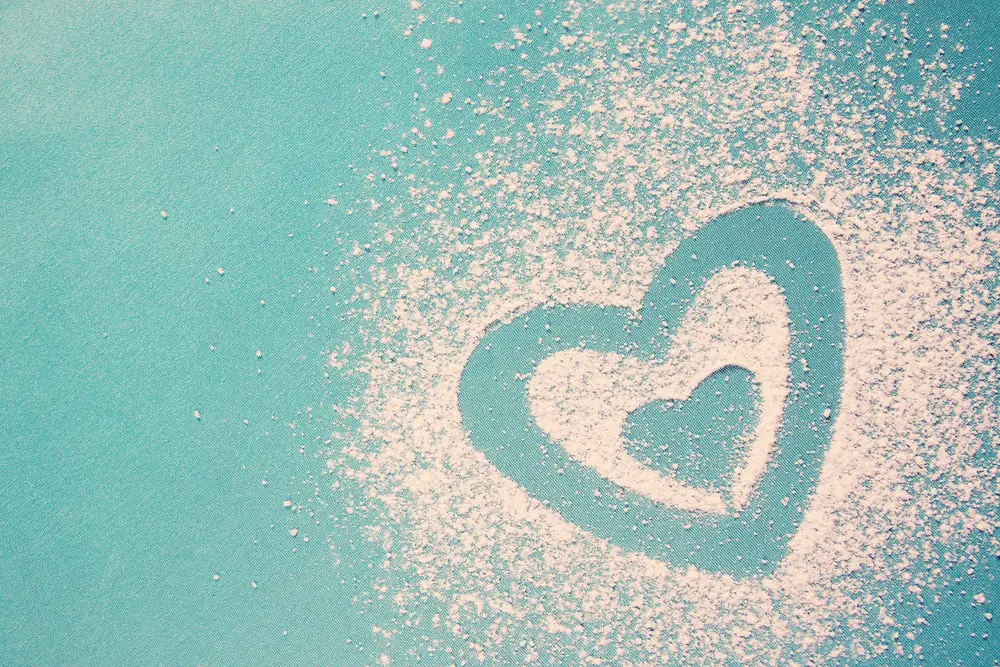
In terms of simplicity and directness, powdered sugar is granulated white sugar that’s been pulverized to a fine powder. Whereas granulated sugar is sandy and coarse, powdered sugar is so fine that it feels almost chalky. Commercial powdered sugar is also mixed with a small but mighty amount of cornstarch that acts as an “anti-caking agent,” preventing the coagulation of large clumps.
So if powdered sugar is that close to granulated sugar, what’s the main difference? When is it essential and when can you say, “Who cares” and just use the regular stuff?
Powdered Sugar: A Closer Look
Even though powdered sugar is only a single ingredient away from regular sugar (a one-generation difference, if you will), it plays a very different role in baked goods.
First and foremost, powdered sugar affects the texture of what you’re making. You’re probably familiar with the notion of creaming butter and sugar together when making cookies, cakes, and pastries. When beaten with butter, granulated sugar creates millions of tiny little air pockets in its wake, which result in doughs that are light and airy in texture.
But when you cream powdered sugar with butter in the same manner, the finer texture of the sugar is unable to generate those same air pockets, leaving you with a denser, crumblier (but by no means inferior) cookie texture. All this to say, if you’re going for an ultra-tender, crumbly, melt-in-your-mouth shortbread type of situation, look for recipes that call for powdered sugar.
If a crisper, crunchier cookie (think chocolate chip) is more your thing, well, you already know which direction to head haha.
Unlike granulated sugar, powdered sugar dissolves easily at room temperature, with no real agitation needed. That makes it great for glazes, buttercreams, frostings, icings, mousses—basically anywhere where the mixture won’t be cooked or where a smooth texture with no hint of graininess is especially vital.
Is Powdered Sugar The Same As Confectioners Sugar?

Yes, powdered sugar is known by a few different common names: 10x sugar and confectioners sugar. The different names all came about because of the culinary profile of the sugar.
It was deemed to be a confectioners tool since desserts are a delectable confection, and 10X was a name given to the sugar because of the extreme grinding and sifting process that is used to make powdered sugar.
For the sake of argument, you could technically say that powdered sugar is slightly different from confectioners sugar since confectioners do have small amounts of cornstarch added to it to prevent clumping. But some companies also do the same for products labeled as powdered sugar, so that is not really a strong argument for differences in the names.
Is Confectioners Sugar The Same As Icing Sugar?
Once again, powdered sugar can also be known as “icing sugar” in some circles because it tastes almost like icing and is meant to be used at the end of a dessert’s preparation, much like icing on desserts.
Is Confectioners Sugar The Same As Granulated Sugar?
In most cases, no. If you’re making a recipe in which powdered sugar is a vital ingredient (cookie dough, for example), stick with powdered sugar or risk getting a final product that doesn’t meet your expectations. But if you are going to try your hand at substituting, you’re more likely to get decent results if you substitute by weight rather than by volume. (Powdered sugar weighs 113 grams per cup whereas granulated sugar weighs 200 grams.)
Powdered sugar is simply granulated sugar that has been crushed into a fine powder. Cornstarch is often added to powdered sugar to prevent clumping. You can make powdered sugar from granulated sugar by simply blending 1 cup granulated sugar and 1 teaspoon cornstarch until a fine powder.
1 3/4 cup powdered sugar can be substituted for 1 cup granulated sugar but the success of the recipe really depends on how you are using the sugar. If it is in a baked good, you should be ok but if you are trying to make a sweet sauce then the starch in the powdered sugar may cause it to thicken more quickly then you would like.
Caster Sugar vs Confectioners Sugar?
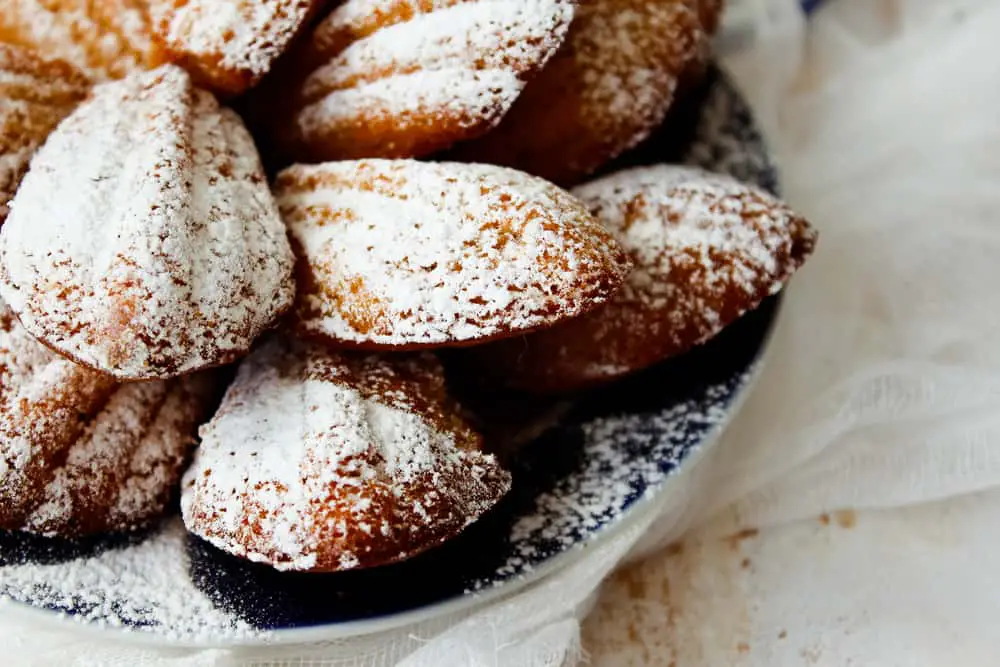
Caster sugar has fine granules of sugar, which have quick dissolving properties. This is the sugar, which is often used by bartenders and bakers. It is also spelled as castor sugar. The packets of this sugar are often labeled as ‘superfine sugar’. It is available in both refined as well as unrefined form.
Caster sugar substitute can be ground conventional sugar. Caster sugar texture lies between the texture of conventional sugar and confectioner’s sugar. Since it is finely ground, it dissolves easily. This sugar is often used to make meringues. It is also used in various beverages, so that there is no layer of undissolved crystals at the bottom of the container. Now that you know what is caster sugar and what is powdered sugar, we will turn to the difference between the two.
The caster sugar is very fine sugar, which is also known as ‘superfine’ sugar. However, it is not as fine as powdered sugar to which cornstarch is added. Making powdered sugar at home is also possible. You can combine about 1 cup of granulated sugar with 2 tablespoons of cornstarch and blend well, till you get sugar in powdered form. Keep the sugar aside, before you use it. Like powdered sugar, one can also make caster sugar at home.
You will have to fine grind granulated sugar, without any additives. When you make caster sugar let the sugar sit in the blender for 5 to 10 minutes before you open it, as it gives rise to sugar dust. To settle the debate, the difference between both caster sugar and powdered sugar is that powdered sugar contains cornstarch, while caster sugar does not.
At the same time, powdered sugar is finer as compared to caster sugar. Now that you know the difference, you will not be at loss when you are cooking a special recipe.
Bakers Sugar Vs Confectioners Sugar
Not to be confused with confectioners’ sugar or powdered sugar, which are not the same thing and much more powdery in texture. Baker’s sugar is still granular, just a finer texture than regular granulated sugar. Super-fine sugar works wonderfully when making meringues and angel food cake, as it dissolves more readily into the egg whites.
You can make your own by placing granulated sugar in the bowl of a food processor fitted with a metal blade and blending until the sugar is more finely ground. One caveat: if you are making crystallized fruit or flowers or using baker’s sugar to add sparkle to cookies or anything else, the homemade version will not work. It will actually be a bit dull with some powdery residue.
Use purchased baker’s sugar in these instances. You can substitute baker’s sugar in recipes that call for regular granulated sugar, cup for cup, but the opposite does not necessarily apply.
Powdered Brown Sugar
Powdered Brown Sugar is an all-natural brown sugar with a free-flowing, clump-free texture. Unlike traditional brown sugar, powdered brown sugar is easily measurable and pourable, and its uniform texture and small granules blend seamlessly into seasoning blends and rubs.
Produced by blending refined white sugar with molasses, brown sugar has a deep caramel color and rich flavor. Originally considered a byproduct of sugar refining, brown sugar did not come into popular culinary use until the 16th century, with the rise of European sugar plantations in the Caribbean. At the time, brown sugar was simply white sugar with molasses left in it from the refining process, rather than white sugar with molasses added in, as it is today.
Its popularity stemmed from both its cheap cost and the complex flavor it imparted to pastries, breads, candies and drinks.
Powdered brown sugar is mainly used to add sweet, molasses-infused flavor to baked goods like cakes and cookies, but it is also an important flavoring agent in savory creations like baked beans, barbecue sauces, and seasoning rubs.
Powdered Sugar Nutrition
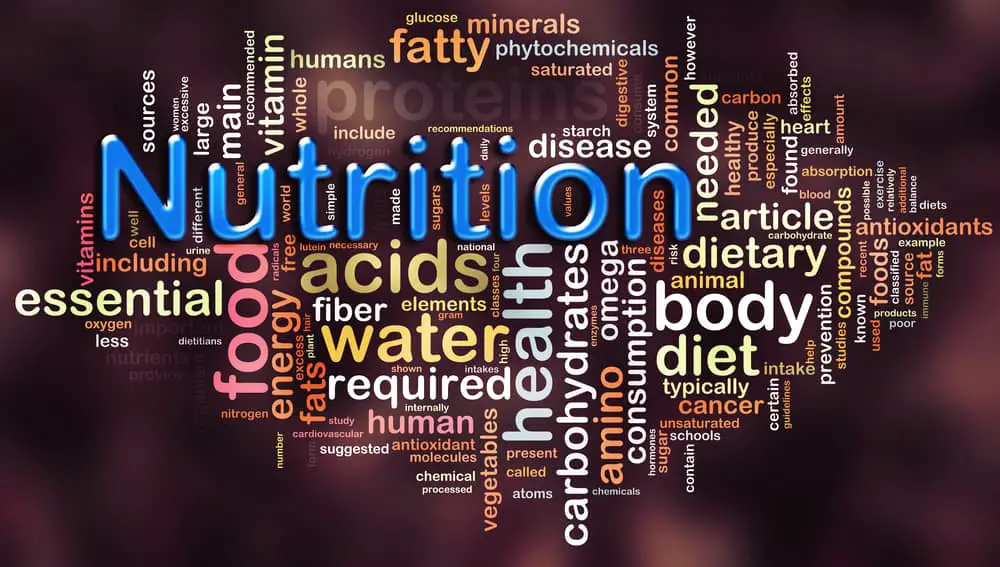
Aside from a small amount of starch, powdered sugar is exactly the same as white refined granulated sugar. The only difference is the fineness of the grind. As refined sugar, its nutritional value is limited. That said, it does have a few pros. Its positives include:
- It gives you energy: Sugar is a simple carbohydrate and like other simple carbohydrates, it is an excellent source of energy. It has a very high-calorie content, which means that it gives you the fuel you need for physical activity.
- It is fat-free: Consuming powdered sugar in excess can lead to your body storing the extra energy as fat; however, sugar itself does not contain fat and therefore will provide no calories from fat.
- It has no cholesterol: Because it is not an animal product, sugar does not contain cholesterol. However, there is at least one study showing it to lower high-density lipoprotein (HDL); HDL is also known as good cholesterol.
- Sugar has no benefits when it comes to treating or preventing any diseases or health conditions, but it should not be harmful if consumed in moderation.
Brown sugar, like all sugar, is a simple carbohydrate that provides quick energy (glucose) to the body and the brain. Glucose is the brain’s preferred energy source, however, excess calories and carbohydrates from sugar and other sources are stored as fat. So it is important to consume sugar in moderation.
Now for the bad news…
Excess sugar consumption is often blamed for increased rates of disease including heart disease, type 2 diabetes, metabolic syndrome, and non-alcoholic fatty liver disease. However, some experts assert that when sugar is consumed at recommended levels, it does not contribute to increased risk of disease. Experts recommend that the upper limits of sugar consumption should not exceed 10% of total calories each day.
But everyone has different needs and the recommended levels are not an exact science. Using the recommended amounts as a guide, you can figure out what works best for your body.
Some people believe that brown sugar is a healthier alternative to white (refined) sugar because it contains molasses. Molasses is known to provide vitamins and minerals including potassium, calcium, iron, magnesium, choline, and some B vitamins. But brown sugar only contains a small amount of molasses. When brown sugar is consumed in levels that are considered healthy, the micronutrients provided by the molasses are insignificant.
Brown sugar calories are not as high as what is seen in white sugar, but the caloric intake is still empty calories since only very little sugar is needed by the human body each day.If there are concerns, brown sugar for diabetics, such as keto brown sugar, is certainly a great substitute to consider since the production process seeks to remove excess carbs in brown sugar.
Organic brown sugar can help to answer the questions: is brown sugar gluten free or is brown sugar vegan? But it must be said that not brown sugar will have to be prepared in a special way to remove any trace amounts of gluten, and the production process for sugar in general does include bone char, which makes it questionable as a vegan food.
Is Confectioners Sugar Vegan?
Although sugar is derived from a plant, there are some issues with the processing of sugar that occur that make it non-vegan friendly.
As mentioned, bone char—often referred to as natural carbon—is widely used by the sugar industry as a decolorizing filter, which allows the sugar cane to achieve a white color. Bone char is made from the bones of cattle who were slaughtered in foreign countries and sold to traders in other foreign countries, who then sell the bones back to the U.S. sugar industry.
Typically, sugar is made from sugarcane, sugar beets, or coconuts. Beet and coconut sugar are never processed with bone char, so it can be said that eating powdered sugar made from beet sugar is the best way to maintain a vegan lifestyle with sugar.
Sugar-Free Powdered Sugar
Confectioners sugar for diabetics or for anyone who wants sugar free powdered sugar is available. Sugar- free powdered sugar is an essential ingredient in many recipes, particularly for baked goods with icing or frosting that require a smooth texture. This substitute will not work for every recipe. Like any other sugar replacement, this one is best used when you need the flavor of sugar but not necessarily its baking properties.
Unless your recipe was specifically designed to use Splenda, this substitute could cause issues. It may not bake properly or taste right.
Don’t try to use Splenda-based granulated or powdered sugar in recipes where sugar is the main ingredient. It’s also not going to work if the recipe depends on sugar for either structure or its caramelizing properties. Quite often, you’ll be better off searching for a sugar-free or low-sugar recipe to use instead.
This doesn’t mean that you can’t experiment. If you have some baking experience and time to play around with your favorite recipes, it may be possible to adjust the recipe and make it work. Simply think about the role sugar plays in your recipe and decide if Splenda can take over for it.
Is Confectioners Sugar Keto?

Keto powdered sugar is a low carb version of generic powdered sugar. It is made without cornstarch, and is completely sugar-free, calorie free, and contains zero carbs.
How Is Confectioners Sugar Made?
From a manufacturing perspective, powdered sugar is the same as ‘regular’, e.g. granulated sugar. These white sugars are all made up of a molecule called sucrose (also called saccharose). Powdered sugar is made from granulated sugar by milling the sugar crystals down to a very small particle size. Whereas you can easily see the individual crystals in granulated sugar, that is less so for powdered sugar.
When you make powdered sugar icing, you’re mixing sugar and water. At the start of this process, most of the powdered sugar will dissolve in the water. Sugar dissolves very well in water. At room temperature, you can dissolve about twice the weight of the initial water. So you can dissolve over 200 grams of sugar in only 100 grams of water.
Since powdered sugar is made up of tiny sugar crystals, they dissolve very easily. They have a very large surface area that can easily interact with the water. When dissolving, the tiny sugar crystals will break down into individual molecules (which are each a lot smaller than the initial crystals). These molecules are then surrounded by water, they’ve dissolved.
You can dissolve a lot of sugar in water. However, at some point, the liquid will be saturated. That is, there is no more space in the water for more molecules to dissolve. At room temperature, this happens when you’ve added approximately twice the weight of the water in powdered sugar to your icing.
This happens because of all those sugar molecules. Each sugar molecule is surrounded by water molecules and these hold onto each other. Once every water molecule is surrounding a sugar molecule, it can’t surround a new molecule anymore.
From this point onwards any extra sugar will no longer dissolve. Instead, the crystals will remain intact and will nestle themselves in between the water and dissolved sugar molecules. You now have a mixture of sugar water + sugar crystals dispersed throughout. Because these powdered sugar crystals are so small they can fit quite snuggly in the sugar water and you can add a lot of them.
How To Make Confectioners Sugar At Home
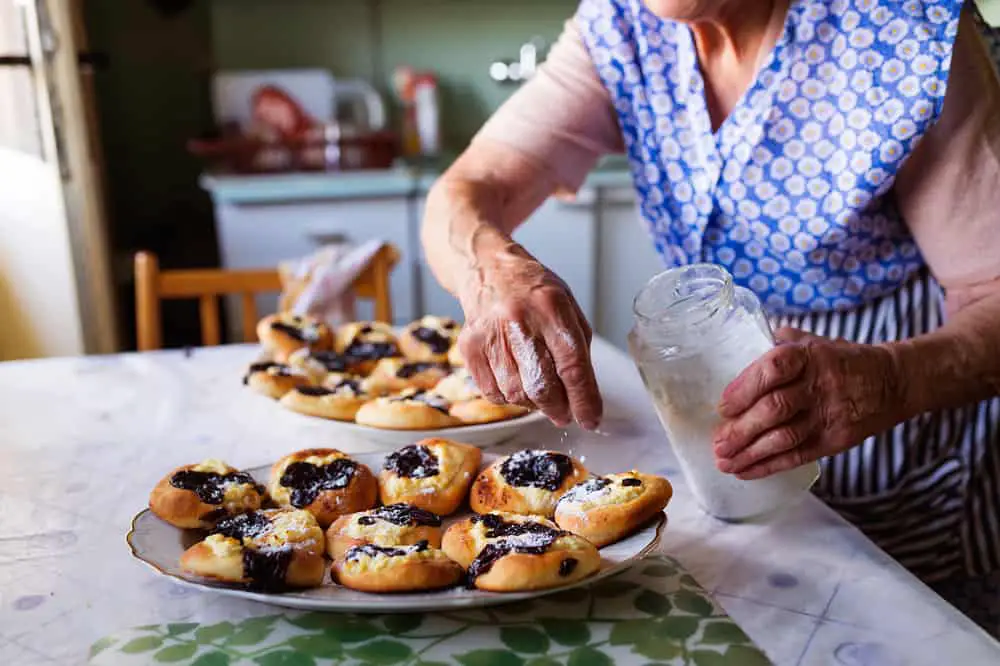
To make confectioners sugar at home, you can use any one of the following tools: a clean/dry coffee or spice grinder, a high-power blender, or a food processor. The coffee/spice grinder is the most efficient, but obviously can only handle a small amount of sugar at a time, so a high powered blender or a food processor is the next best thing.
Weigh out an amount of sugar, and add it to the blender or food processor (1/2 cup of granulated sugar will make about 1 cup powdered sugar, but that will vary slightly based on the type of sugar you use). Pulse on high speed until the sugar is no longer visibly granulated, but instead resembles a fine powder. This can take 2 to 5 minutes, depending on the amount of sugar and the machine you’re using.
Give yourself (and the machine) a break so that neither of you get burnt out.
Transfer your now-powdered sugar to a large sieve and add 3 percent of the sugar’s original weight in cornstarch. So if you started with 10 ounces of sugar, add 0.30 ounces of cornstarch, and sift the two together 2 to 3 times to combine. Cornstarch is naturally gluten-free, but you can also use arrowroot starch/powder, which will create a super fine, super smooth sugar.
You can store the powdered sugar in an airtight container, or use it immediately as you would the store-bought kind. If stored properly, homemade powdered sugar should keep for one to two years.
Colored Powdered Sugar
For powdered sugar that you are using as a colored powder, decorating dusts are the best choice. Simply blend food colorings in with the sugar and use.
Food coloring can be used to tint powdered sugar that is dissolved when it is mixed with a small amount of liquid, such as milk or freshly squeezed lemon juice, or for use in a frosting. Then, liquid or gel food coloring is added to the recipe to achieve the desired color; it will not result in colored, individual granules, but rather a uniform color as a whole.
How To Color Confectioners Sugar
Both granulated and powdered sugar can be tinted in a rainbow of colors. It is an easy way to decorate and adds a special decorative touch to cakes, cupcakes, cookies and other desserts. Sanding Sugar that you can buy already tinted, is great for decorating, adding sparkle to recipes. In a small resealable plastic bag, combine sugar and a few drops of food coloring. Seal bag and shake to tint the sugar.
Then, allow sugar to dry on a flat surface for 15-20 minutes before using.There are many ways to use it: add a pinch of the powder to your dry mixture or combine it with a few drops of clear alcohol for a paint-like consistency. You can even dust it onto foods to create a gentle finish. Powdered dye is best to use in recipes that are sensitive to any added liquid, like chocolate or macarons.
Does Confectioners Sugar Go Bad?
Powdered sugar usually comes with a shelf life of one to two years, but if stored properly, it stays fine indefinitely. Opening the bag doesn’t change anything – you can still store it however long you want, as long as it’s well covered and in a dry place.
The best-by date on the label only informs how long the product should retain top quality. It isn’t an expiration date and has nothing to do with food safety. In other words, icing sugar doesn’t go out of date.
That date is there partly because people trust food products with a printed date more than ones without.
In almost all cases, you can’t tell the difference between a new package of confectioner’s sugar and one that’s 3 years past its date. That means yes, you can use “expired” powdered sugar, as long as there’s nothing wrong with it.
How Long Does Confectioners Sugar Last?
Throw out your powdered sugar if there’s mold or any other organic growth, wet clumps, or any pantry pests inside. The same applies if it smells funny, or tastes bad in any way. Small and dry clumps are perfectly fine. Wet clumps, mold, and any other growths are usually caused by water getting into the package.
No matter if there are only a few small moldy dots, or an entire civilization ready to build space shuttles, throw out the whole thing. There’s no need to take risks here.
Best Way To Store Confectioners Sugar
You should store powdered sugar in a cool and dry area. The pantry or a kitchen cabinet are good choices.
After opening the package, it needs to be sealed tightly, so that any moisture or bugs can’t get inside.
If the packaging is resealable, leave the sugar in it. If not, I suggest transferring the powder into an airtight container.
You can even buy a decorative container and put it somewhere on display if you like. Preferably not in direct sunlight, though. Anything goes as long as the sugar stays in a sealed environment, away from moisture and sources of heat.
Last but not least, keep the powdered sugar away from any strong odors. Of course, the tight seal should prevent any smells from being picked up by the product, but better safe than sorry.
Substitutes For Confectioners Sugar
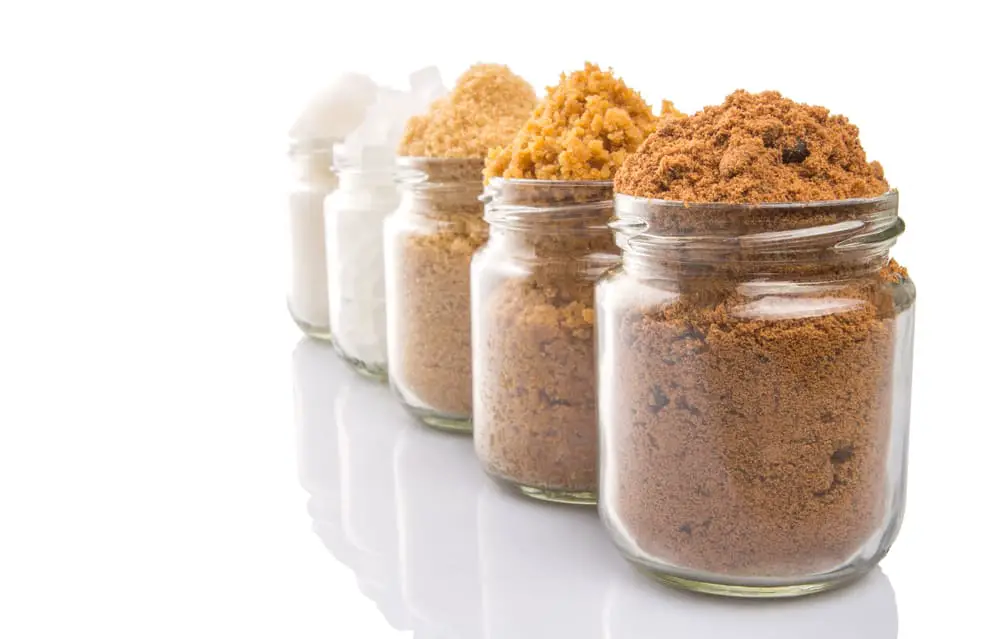
Depending on your reason for needing a powdered sugar substitute, there are a variety of options that serve as adequate replacements.
Coconut Sugar
If you’re looking for a healthier option, coconut sugar is a bit less sweet and has a lower glycemic index than traditional white sugars, and can serve as the primary swap ingredient. Just combine 1 cup of coconut sugar with 1 tablespoon of cornstarch or arrowroot powder and blend if possible.
Hot Cocoa Mix
Got any hot cocoa mix lying around? Ideally for chocolate desserts, you can use those packets in a one-to-one trade for powdered sugar. You may want to grind it if you have the tools, just to make sure it’s as fine as possible.
Dry Milk Powder
For a powdered sugar alternative that will achieve a similar texture but with far less sugar, try dry milk powder. Blend 1 cup of dry milk powder with 1 cup of cornstarch, add sweetener if desired and use this mixture in the same amount as powdered sugar. Just be aware that milk powder absorbs more liquid than powdered sugar, so you may want to add a bit more liquid to the recipe for an ideal consistency.
Can You Substitute Confectioners Sugar For Granulated Sugar?
Don’t stress if you find yourself in a pinch with no blender, cornstarch or anything that can help you carry out one of these swaps. It is possible to simply use granulated sugar in a slightly smaller amount, though you’ll have to accept that the texture may not be ideal, especially for icing or other recipes that are supposed to be super smooth. Just substitute 1 cup of granulated sugar for every 1 ¾ cups powdered sugar and proceed as directed.
Can You Substitute Splenda For Powdered Sugar?
Don’t try to use Splenda-based granulated or powdered sugar in recipes where sugar is the main ingredient. It’s also not going to work if the recipe depends on sugar for either structure or its caramelizing properties. Quite often, you’ll be better off searching for a sugar-free or low-sugar recipe to use instead.
This doesn’t mean that you can’t experiment. If you have some baking experience and time to play around with your favorite recipes, it may be possible to adjust the recipe and make it work. Simply think about the role sugar plays in your recipe and decide if Splenda can take over for it.
Monk Fruit Powdered Sugar
You can also opt to use a powdered sugar that has been made with monk fruit. The consistency may be a bit off in comparison to powdered sugar, and monk fruit may actually be a bit sweeter, but the sugar consumption will not be as bad.
How Much Is In A Box Of Confectioners Sugar?
There is one interesting thing about cooking you may have noticed. There are several different units of measurement for measuring the same amount of anything. We have come across cupfuls, bowls, handfuls, tablespoons, teaspoons, pounds, kilos, and many such depending on the food item being measured. It is difficult to follow them individually. When you thought you had mastered their individual conversion formulas, something new comes up.
Also, the units of measurements in recipe books are not standardized. In one part of the recipe, they will refer to a cupful. Further down the recipe, they will refer to something in grams. It can be frustrating when you do not have the same measurement units to understand the different quantities used for different products. In some, the measurement units are different even for the same food item, like, e.g., confectioners sugar.
If you are making a dish and following a recipe that lists out ingredients in weight (grams and ounces) rather than volume (cups and teaspoons), you would need math to help you.
How Many Cups In A Box Of Powdered Sugar
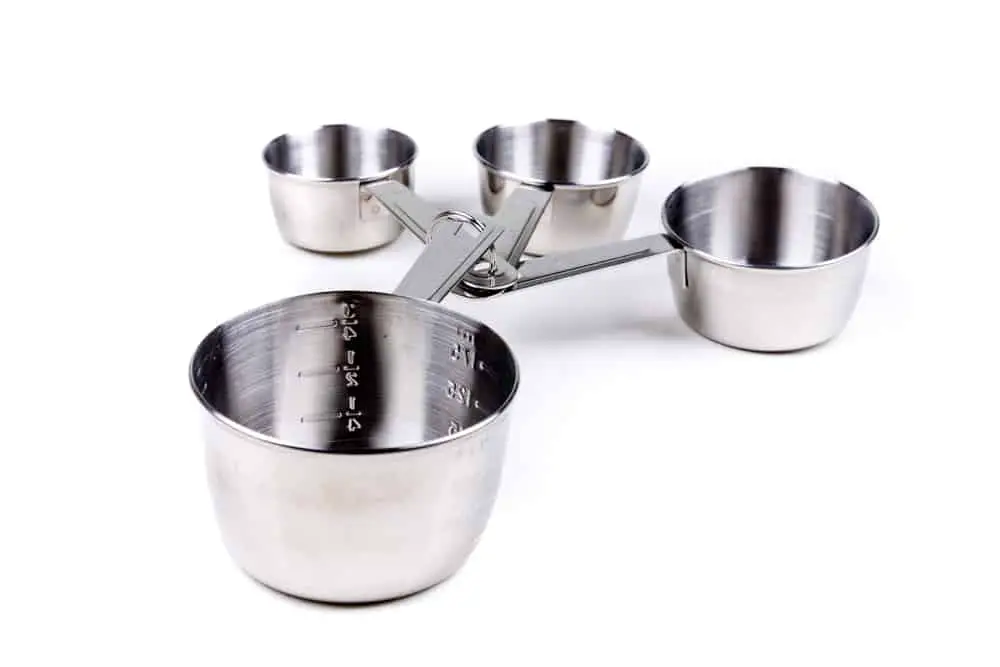
Everybody knows that 1 cup equals 8 ounces, right? Well actually, when weighing out ingredients for a recipe, 1 cup does not always equal 8 ounces. We know that 1 cup of water weighs 8 ounces, but honey, as an example, is thicker than water, so 1 cup of honey actually weighs in at 12 ounces.
Powdered sugar right out of the box or the plastic bag weighs 4 1/2 ounces per cup, so a 1-pound box (or 16 ounces) contains about 3 1/2 cups of powdered sugar. If a recipe calls for sifted powdered sugar, weigh out 4 ounces of sifted powdered sugar to equal 1 dry measuring cup. Sifting powdered sugar makes it lighter and fluffier, so it takes up more space in the cup.
The main problem arises when you have to use them all together. You do not have a device to measure them the way they have been shared in the recipe book. Here we discuss the same issue but in the context of powdered sugar, which faces the same problem. We have to resort to some metric conversion to understand the quantity and conversion for powdered sugar.
How Many Ounces In A Box Of Confectioners Sugar
As a general rule of thumb, we are all aware that 1 cup of anything generally equals 8 ounces. But it is interesting to note and surprising as well that when you try to weigh out all the ingredients for a particular recipe, 1 cup would not always equal 8 ounces.
Things are further complicated as there are not standard cups to pounds/ounces conversion ratios for all the ingredients. This is because each food ingredient will consume a different amount of volume or space.
Generally, we are also aware that 1 cup of water weighs 8 ounces. There is no debate about that. However, consider another liquid like honey, as an example, which is quite thicker than water. Now we are aware that honey is quite denser than water, and if we measure, 1 cup of honey would weigh in at 12 ounces.
We can infer that the density of the mass and how densely that material is packed is what matters too. Since confectioners sugar is so light, we can infer that it likely has roughly 64 ounces in a box.
How Many Cups In A Pound Of Confectioners Sugar
On a more practical note to consider, 1 cup of powdered sugar picked right out of the box (or a plastic bag) will weigh at 4 1/2 ounces per cup. Extrapolating the figures, we would arrive at a 1 pound powdered sugar box (whose weight is 16 ounces) that will contain about 3 1/2 cups of powdered sugar.
However, things are not that easy. If you are trying to figure out the pounds to cup ratio for powdered sugar, an additional factor needs to be considered. That factor is determined by understanding if the sugar is sifted or not. Sifted powdered sugar will make it lighter and fluffier, taking up more space in the cup, thereby increasing its volume but not the weight.
In other words, there would be far less sifted sugar in a cup than when compared to unsifted (or settled) powdered sugar.
If you want to measure the contents of a box of powdered sugar in cups, please note that the powdered box is usually unsifted sugar. You can use the formula we shared above to calculate the volume in cups. Boxes of powdered sugar, e.g., one bought online is usually 2 pounds or 32 ounces by weight. Using the formula above, we can determine that the box contains 8 cups of powdered sugar.
Ideally, you must use a kitchen weighing scale to measure everything. It’s the perfect way to eliminate all errors and make perfect recipe-based calculations. Inaccurate calculations can completely spoil recipes.
In summary, a container of powdered sugar will yield quite a lot of confectioners sugar.
